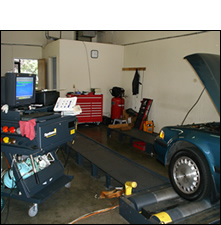 |
||||||||||||||||||||||||||||||||
|
|

|
|
|
3. Defective Catalytic Converter (CAT) Some vehicle manufactures have designed their cars to operate without EGR valves. Non-EGR equipped vehicles rely heavily on the Catalytic Converter to assist in the reduction of NO. These vehicles have tendencies to develop CAT problems sooner then those which are equipped. If you own a non-EGR equipped vehicle, and have failed the emissions test for high NOx, pay close attention to the Catalytic Converter.
Read about Catalytic Converter
4. High Engine Mileage - Over an engine's lifetime, carbon build-up develops in the engine's combustion chambers. The more miles on your engine, the more carbon build-up on the pistons, cylinder heads and valves. Carbon build-up decreases the available space for the air/fuel mixture to combust, and causes higher cylinder compression. High compression results in high temperatures and high NOx. Keep in mind this problem is usually seen in vehicles with over 150,000 miles which have been poorly maintained. The solution to this problem is called De-Carbonizing. It usually costs around two labor hours at a smog check repair station. It will remove a good amount of carbon out of an engine. This will increase combustion space, lower compression and lower NOx. 5. Engine Overheating - Inadequate engine cooling can will high NOx. If your vehicle's cooling system is not working efficiently, (i.e. bad radiator, thermostat, hoses) high NOx will be created. Remember high NOx nitric oxide is created when an engine's combustion chamber temperatures reach over 2500F. You will want to make sure your vehicle's cooling system is working properly, and your vehicle's temperature gauge is always indicating normal.
|